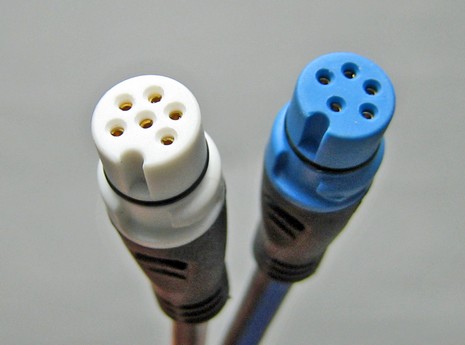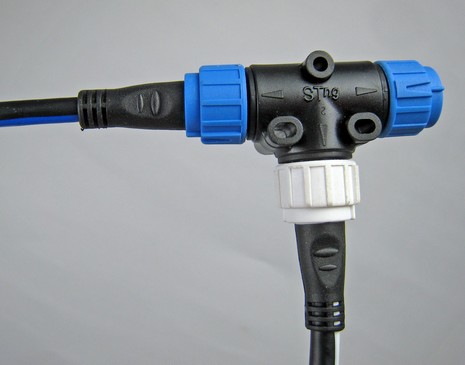Raymarine STng, the pin mystery

I’m on deadline today, and may find no more time for posting, but here’s a puzzle to ponder. Those two male female connectors above are unique to Raymarine’s SeaTalkNG (or STng) version of NMEA 2000 cabling. The white version is on both ends of every “spur” cable that’s used to connect devices to the backbone—or to daisy chain one device to another—and the blue version is on both ends of every backbone segment. So why in tarnation does one have six pins and the other five?
Especially as a normal white-headed spur cable only contains the five standard NMEA 2000 wires! Admittedly it took me a while to get my head around what’s going on, but there are two good reasons for that extra pin. In fact, I now understand some rationals for STng (others are also baffled), which I’ll discuss soon, along with more ST70 fun. But for now, can any of you marine electronics geeks figure out the pin mystery?


 Share
Share
Ah, a smart alec answer has already arrived via email:
"…so that you can’t use off-the-shelf N2k hardware with it?"
Which may or may not be a motive, but certainly isn't one of the "two good reasons" for that extra pin.